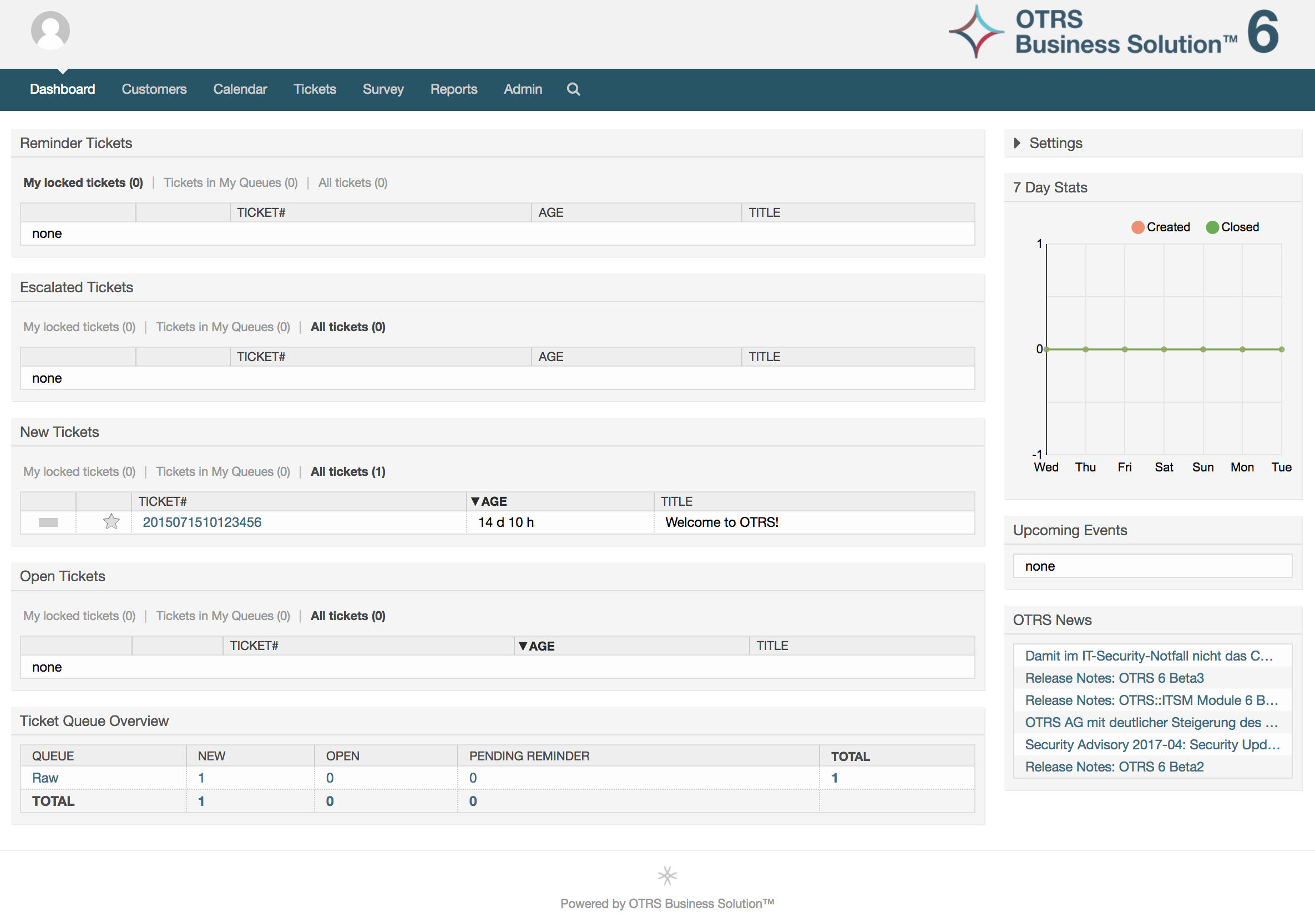Upon successfully logging into the system, you are presented with the Dashboard page (see figure below). It shows your locked tickets, allows direct access through menus to the queue, status and escalation views, and also holds options for creation of new phone and e-mail tickets. It also presents a quick summary of the tickets using different criteria.
To improve clarity, the general web interface is separated into different areas. The top row of each page shows some general information such as the logout button, icons listing the number of locked tickets with direct access to them, links to create a new phone/e-mail ticket, etc. There are also icons to go to the queue, status, and escalation views.
Below the icons row is the navigation bar. It shows a menu that enables you to navigate to different areas or modules of the system, letting you execute some global actions. Clicking on the Dashboard button takes you to the dashboard. If you click on the Tickets button, you will get a submenu with options to change the ticket's view, create a new ticket (phone/e-mail) or search for a specific ticket. The Statistics button presents a menu that allows you to choose from an overview of the registered statistics, creating a new one or importing an existing one. The Customers button leads you to the Customer Management screen. By clicking the Admin button, you can access all of the administrator modules, which allows you to create new agents, queues, etc. There is also a Search button to make ticket searches.
If any associated applications are also installed, e.g. the FAQ or the Survey, buttons to reach these applications are also displayed.
In the area below the navigation bar, different system messages can be shown. If you are logged in as the default OTRS administrator user, you get a red message warning you not to work using this system account.
Below the title of the section you are currently in, there are several subsections containing relevant information about the screen you are working on, each one in a separate box.
These boxes contains the main part of each screen, usually they are displayed in one or several columns, each box can store relevant information about the current screen like for example instructions, advises, overviews, etc. Also is displayed the form or tool necessary for performing the action associated to each screen, like for example, add, update or delete records, check the log, change configuration settings, etc.
Finally at the bottom of the page, the site footer is displayed (see figure below). It contains a link to directly access the OTRS official web site, or switch to mobile mode.
Normally the icon row, navigation bar and footer are the same in all the screens over the web interface.

